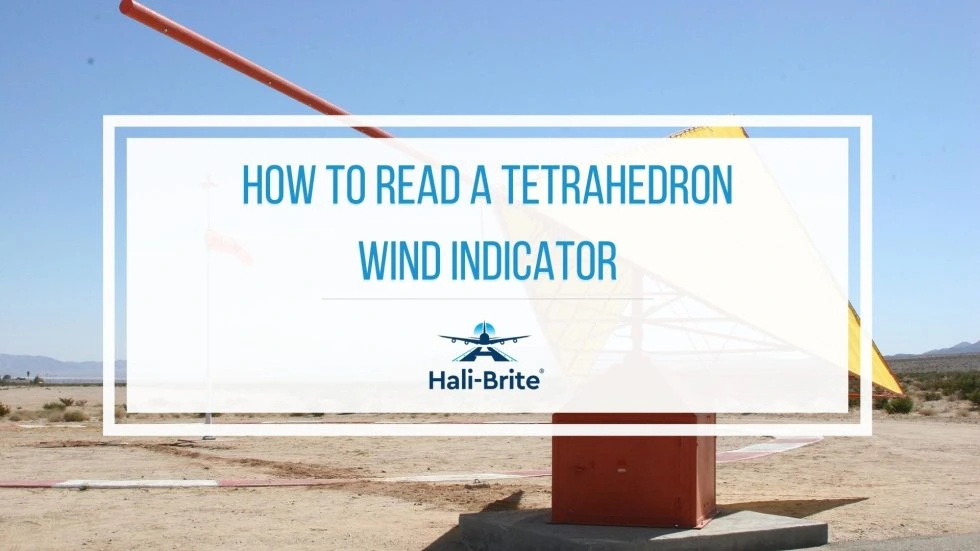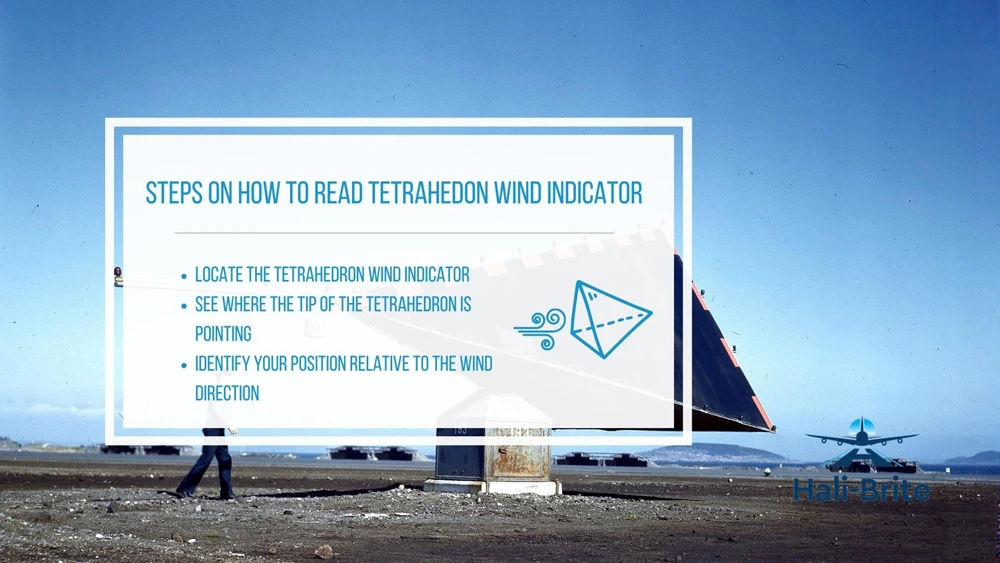In airports, the Air Traffic Control (ATC) assists aircraft pilots during takeoff, landing, and taxiing. They provide crucial information that helps facilitate traffic management and collision avoidance. Pilots, however, rely on airport visual aid equipment, such as markings and lighting, to operate safely when the ATC is unavailable.
A wind indicator is a piece of aviation equipment that helps the pilot determine wind direction. Airports employ a windsock, a wind tee, or a tetrahedron as their wind indicator.
In this article, you’ll learn more about tetrahedron wind indicators, including how to read them and how they differ from other wind indicators like the windsock.
- What Is a Tetrahedron Wind Indicator
- Reading a Tetrahedron Wind Indicator
- 1. Locate the Tetrahedron Wind Indicator
- 2. See Where the Tip of the Tetrahedron Is Pointing
- 3. Identify Your Position Relative to the Wind Direction
- Does an Airport Need a Tetrahedron Wind Indicator
- What’s the Difference Between a Tetrahedron and a Windsock
- Wind Direction
- Wind Speed
- Hali-Brite for Your Airport Needs
What Is a Tetrahedron Wind Indicator
A tetrahedron wind indicator is an aviation instrument that provides aircraft pilots with information on wind direction. It has an arrowhead-like triangular structure connected to a swivel, allowing it to turn freely with the wind. As the wind blows, the tetrahedron rotates sideways. The tip of the arrowhead points towards the direction opposite from which the wind is heading.
Reading a Tetrahedron Wind Indicator
A tetrahedron wind indicator is typically large enough for aircraft pilots to see it on and above the ground. A tetrahedron is easy to read. Simply follow these basic guidelines:
1. Locate the Tetrahedron Wind Indicator
A segmented circle is usually installed in airports, providing information on traffic patterns and wind direction. Pilots can see segmented circles both in the air and on the ground. To pinpoint the location of a tetrahedron in airports, you first need to locate the segmented circle. Wind indicators, such as tetrahedrons or windsocks, are usually at the center of the segmented circle.
2. See Where the Tip of the Tetrahedron Is Pointing
Once you have located the tetrahedron, see where the tip points. Tetrahedrons point in the direction from where the wind is blowing. When the wind is blowing from the East towards the West, the tetrahedron will point in the East direction.
3. Identify Your Position Relative to the Wind Direction
Pilots tend to take off and land the aircraft facing the wind. The opposing wind produces an upward force that aids in lifting the aircraft during takeoff. In addition, the headwind slows down the plane during landing with minimal brake usage. Thus, knowing the wind direction using wind indicators allows pilots to safely maneuver the aircraft during takeoff and landing operations, especially when Air Traffic Control (ATC) is not accessible.
Does an Airport Need a Tetrahedron Wind Indicator
Airports rarely use tetrahedron wind indicators. The International Civil Aviation Organization (ICAO) does not recommend using tetrahedrons as wind indicators during airport takeoff and landing operations. Instead, the ICAO requires the airports to use windsocks to indicate wind directions, including the wind speed. Moreover, tetrahedron wind indicators can only be used in airports without an operational ATC.
What’s the Difference Between a Tetrahedron and a Windsock
Like a tetrahedron, a windsock (also known as a wind cone) is another aviation instrument that can indicate the wind direction. Windsocks resemble cones and have apertures on both ends. The wind enters the windsock through the large opening, traveling towards the smaller one. The smaller end of the windsock indicates the direction to where the wind is going.
Wind Direction
Tetrahedrons and windsocks are both visual sources of wind direction. However, each of these wind indicators functions differently. Tetrahedrons point towards the opposite direction of the wind blow. For example, a tetrahedron will point to the West when the wind is heading towards the East. On the other hand, a windsock points in the same direction as the wind. A windsock pointing North suggests that the wind is also blowing towards the North.
Wind Speed
Tetrahedrons are unable to indicate wind speed. Windsocks, as opposed to tetrahedrons, can provide visual information on wind speed in place of ATC. Windsocks are divided into five segments, each suggesting an approximate wind speed. Every extended segment corresponds to a wind speed of three knots or roughly 5.5 km/h.
Hali-Brite for Your Airport Needs
Though both windsocks and tetrahedrons can be used to show the wind’s direction, windsocks are relatively more efficient as they can also determine the speed of the wind. Some windsocks, such as the lighted L-806 and L-807 wind cones, are also equipped with lighting features that provide pilots with visuals on wind direction and wind speed during night navigations.
Hali-Brite is here to provide you with standard FAA-certified windsocks with varied options that match your preferences. We also offer Wind Cone Light Kits that can illuminate your airport windsocks, providing aircraft pilots with visibility during night operations. Get your free quote now by contacting us here.


